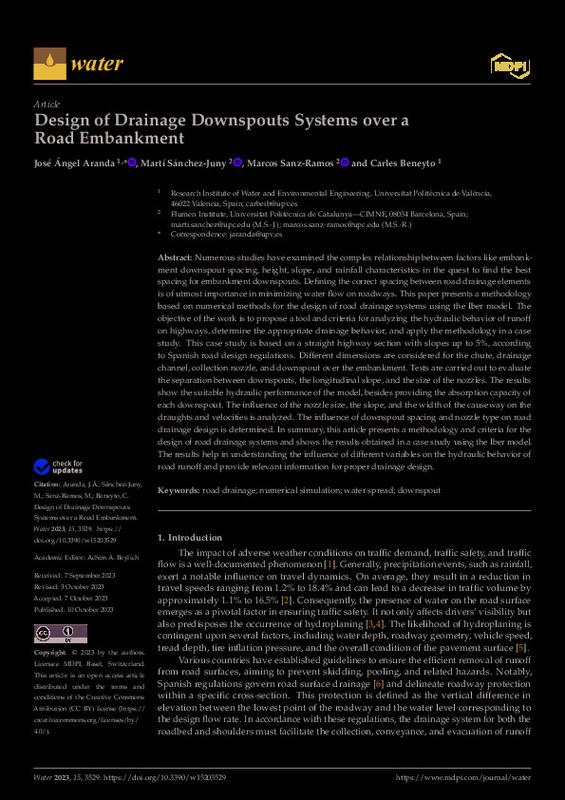JavaScript is disabled for your browser. Some features of this site may not work without it.
Buscar en RiuNet
Listar
Mi cuenta
Estadísticas
Ayuda RiuNet
Admin. UPV
Design of Drainage Downspouts Systems over a Road Embankment
Mostrar el registro completo del ítem
Aranda Domingo, JÁ.; Sánchez-Juny, M.; Sanz-Ramos, M.; Beneyto, C. (2023). Design of Drainage Downspouts Systems over a Road Embankment. Water. 15(20):1-19. https://doi.org/10.3390/w15203529
Por favor, use este identificador para citar o enlazar este ítem: http://hdl.handle.net/10251/201751
Ficheros en el ítem
Metadatos del ítem
| Título: | Design of Drainage Downspouts Systems over a Road Embankment | |
| Autor: | ||
| Entidad UPV: |
|
|
| Fecha difusión: |
|
|
| Resumen: |
[EN] Numerous studies have examined the complex relationship between factors like embankment downspout spacing, height, slope, and rainfall characteristics in the quest to find the best spacing for embankment downspouts. ...[+]
|
|
| Palabras clave: |
|
|
| Derechos de uso: | Reconocimiento (by) | |
| Fuente: |
|
|
| DOI: |
|
|
| Editorial: |
|
|
| Versión del editor: | https://doi.org/10.3390/w15203529 | |
| Coste APC: |
|
|
| Tipo: |
|









